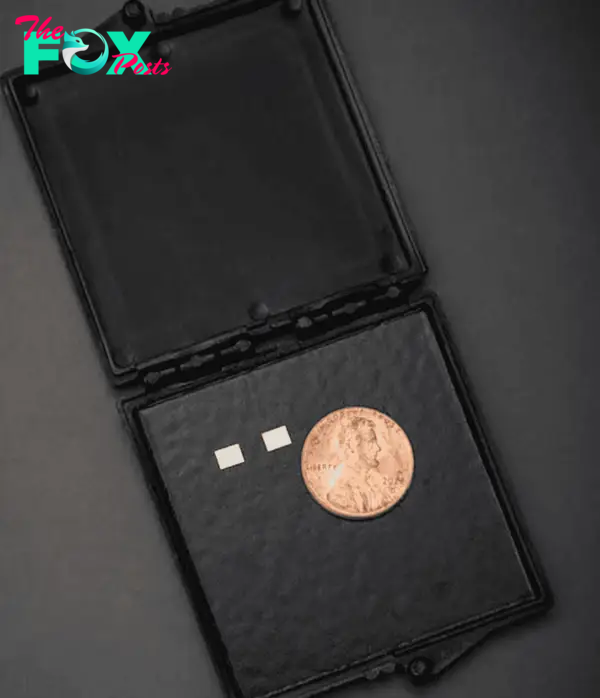Sports
NASA funding URI engineering professor to develop next-gen telescope technology
Photo: Sungho Kim, assistant professor of electrical, computer and biomedical engineering, in his lab at the Fascitelli Center for Advanced Engineering. Photos: Nora Lewis
$1.2 million NASA grant supporting development of miniature semiconductors at URI
University of Rhode Island Professor Sungho Kim is developing Technology that could be part of NASA’s next-generation telescope that will allow the space agency to observe and study phenomena that occurred 13.7 billion years ago. Kim is working on the first prototype of a miniaturized semiconductor for a next-generation, far-infrared unit that could help NASA study the origins of the universe.
Kim, an assistant professor of electrical, computer and biomedical engineering, and his research team are developing miniature semiconductors that are much lighter than current Technology, use less energy, and are more resistant to radiation. The project is being funded by a $1.2 million, 3-year NASA grant. Tests on the chips will be run at URI.
“The problem is the space environment is not friendly to electronics,” said Kim, who formerly worked at NASA’s Jet Propulsion Laboratory at the California Institute of Technology. “On Earth, our electronics are protected from radiation by the atmosphere.”
He has assembled a team of graduate students for the project: Prinsca Kusorbor, a Ph.D. student, and Frank Danso, a master’s degree student, both from Ghana; Youn Seo, a master’s degree student from South Korea; and Joseph Daiaa, a senior electrical engineering and German student.
“We are developing a miniaturized semiconductor chip to replace a bulky, power-hungry system,” Kim said. “We will develop the miniaturized semiconductor system in the lab, and a manufacturer will fabricate my design in an advanced silicon process.”
“Our chips will be approximately 4 millimeters by 4 millimeters,” Kim said, adding that the current unit is about 1 meter by 1 meter. “In space, smaller is better and usually more durable. These require much less power, and that is important since electrical energy is limited in space. The only source is solar power. The current system consumes more than 100 watts of electricity, where ours needs only 10 watts. It’s much easier to make a single, small chip resistant to radiation.

“All the hardware in the ‘box’ can be replaced by a single chip,” he said. ”These chips will collect data from the telescope, process it for scientists on Earth.”
A semiconductor is a crystal material with the ability to conduct electricity. These chips can act as conductors and sometimes as insulators. A chip of silicon, which is less than half an inch square, may contain millions of microscopic transistors, which can serve control and memory functions when installed in a computer, automobile, and in this case, NASA’s newest telescope.
NASA launched the James Webb Telescope, which cost $10 billion to build, in December 2021. The Webb is a mid-infrared telescope, operating about 1 million miles from Earth, and the Hubble Telescope is a near-infrared telescope, which orbits the Earth.
“It took NASA 10 years to design and build the Webb Telescope, which is exploring the universe using mid-infrared and sending breathtaking images,” Kim said. “ Now, NASA has begun finding candidates for next-generation, space-borne telescopes. NASA’s astrophysics decadal survey nominated a far-infrared telescope as a candidate for the next-generation space telescope, which will see farther and capture an older universe than the Webb Telescope.
“Many people thought the Webb Telescope was too expensive, but that all changed when it started sending back breathtaking images,” Kim said.
___
-

 Sports2h ago
Sports2h agoWhat is Caitlin Clark’s handicap? The Indiana Fever basketball star claims to be just an “average golfer”
-

 Sports2h ago
Sports2h agoWhat is the cutline at the 2024 CME Group Tour Championship? Who is going home early? LPGA Tour
-

 Sports4h ago
Sports4h agoWatch as Prince Harry Counts Down to 2025 Invictus Games, Meets With Locals: ‘We’re Really Excited’
-

 Sports4h ago
Sports4h agoViral Ring Girl Sydney Thomas Hints at Major Career Move After Celebrating 21st Birthday
-

 Sports8h ago
Sports8h agoHow many points do F1 drivers make for winning a race and do they win any money?
-

 Sports9h ago
Sports9h agoRyan Lochte Reveals Battle With Depression After Car Crash ‘Nearly Took Everything From Me’
-

 Sports9h ago
Sports9h agoNHL Star Zach Werenski Does Johnny Gaudreau’s Daughter’s Makeup During ‘Spoiled’ Hangout
-

 Sports13h ago
Sports13h agoWhat is the cut line at the 2024 RSM Classic? Wesley Bryan misses cut, Joel Dahmen makes it



























